Save Your Back and Save the Bugs! A No-mulch Approach at the Holden Arboretum
March 22, 2022

Though we’ve made it past the vernal equinox, the official start of Spring in the northern hemisphere, I’ve been around northeast Ohio long enough to know that Winter probably hasn’t gotten the memo…even still, there are plenty of garden tasks underway at the Holden arboretum.
One of the first things on my list is to cut back the herbaceous plants on the George and Mary Gardner Lakeside Terrace. The terrace gardens were designed by Toby Davidson, based on Roy Diblik’s “Know Maintenance” gardening technique. The guiding principles of this philosophy are grounded in mimicking the design and function of natural ecosystems. While the first two seasons of planting and establishment require some addition of organic matter, the central idea is to plant densely and let plants live in their own decaying leaves and stems; do not remove garden debris from your beds or add mulch from offsite.
Below are two photos of the terrace in late winter before anything is cut back:
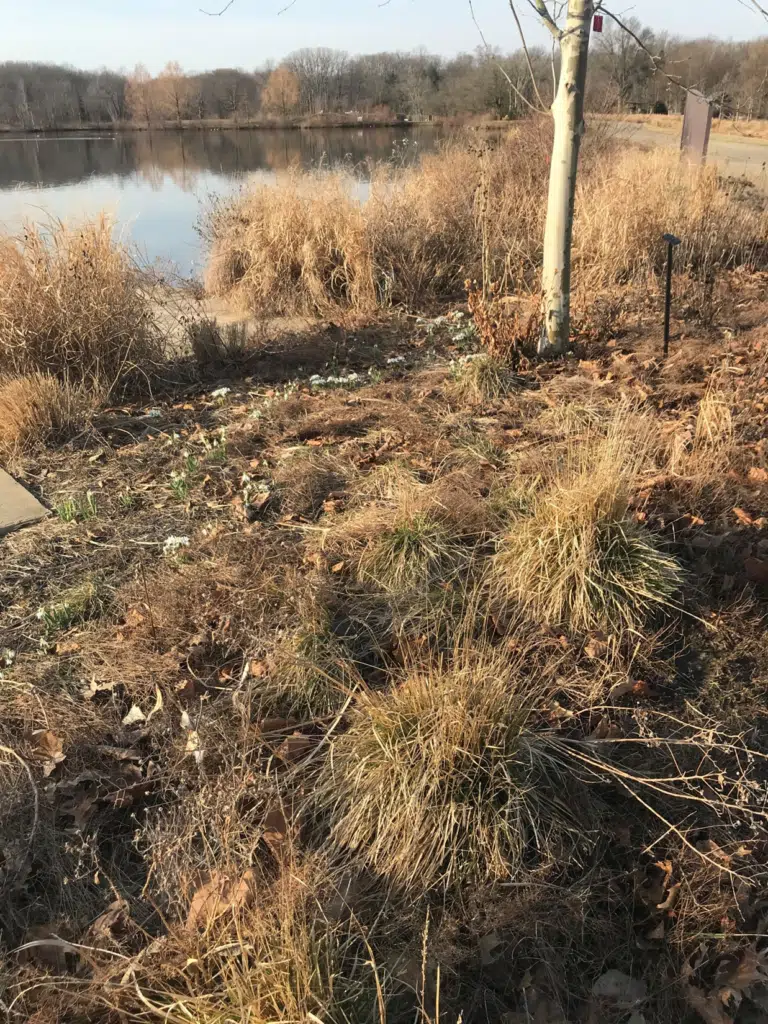
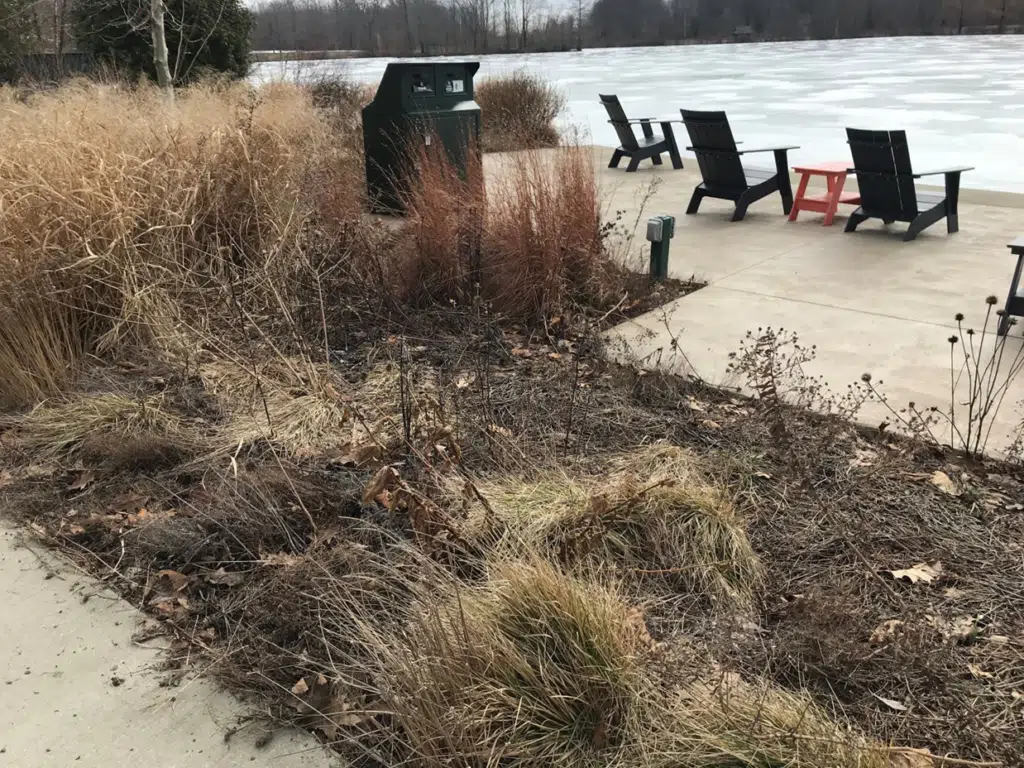
The next two photos below show the same views of the terrace after cutting back, chopping plant debris, and leaving it in place:
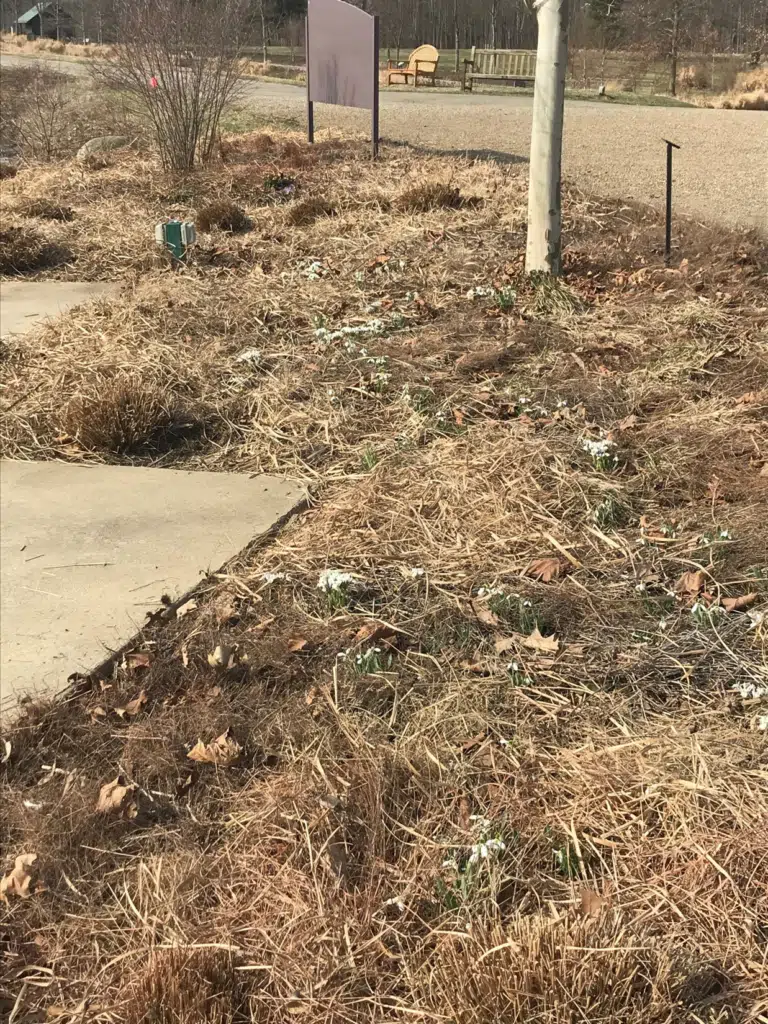
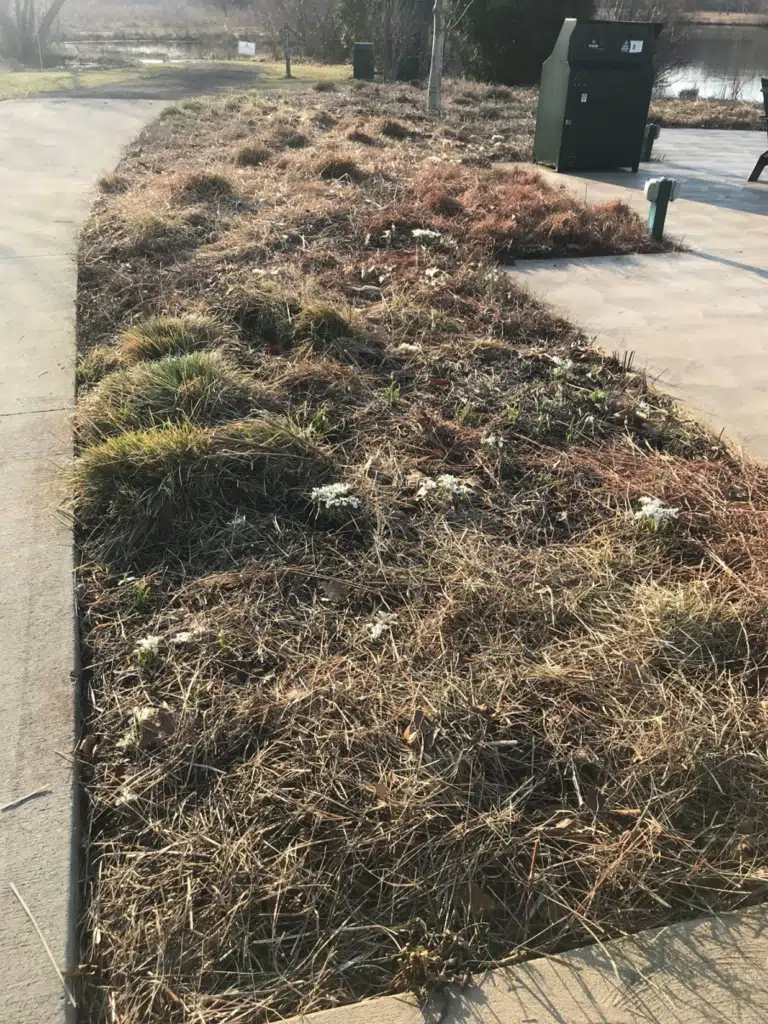
This kind of naturalistic management provides healthy habitat for a variety of plants, animals, and insects, as well as interest and beauty through all seasons. And with proper site preparation and plant selections it can save time, labor, and money. But it is decidedly different than the disciplined annually mulched garden beds widely accepted as the standard. In fact, it may be hard to feel comfortable leaving all that dead plant matter; raking out garden debris and hauling in fresh mulch is a ritual part of spring for many people. I’m going to try to convince you to stop.
Over the winter I was able to attend some inspiring webinars, many of them focused on gardening to support native insects and to increase ecosystem services in our home landscapes and gardens. Life as we know it depends on insects. They are a huge component of Earth’s biodiversity, making up more than half of all named species. Their role as decomposers, pollinators, and food for wildlife is fundamental to life as we know it. And recent studies show that these tiny creatures that keep us alive are disappearing. Invertebrate abundance has declined 45% globally since 1974 (Dirzo et al. 2014).
The reasons for the decline are many and interrelated and include pesticide use, habitat loss, invasive species, light pollution, and climate change. Over a relatively short period of Earth’s history, humans have affected the landscape in ways and at scales that have not been seen before.
Doug Tallamy, author of the book “Bringing Nature Home” and professor in the department of Entomology and Wildlife Ecology at the University of Delaware, has called for individuals to consider managing their property as wildlife preserves. He estimates that 95% of the land in the lower 48 states has either been developed or converted to agricultural use. We cannot rely on the remaining natural areas to support enough insects to in turn support healthy ecosystems and human life, because there simply aren’t enough of these areas left.
Tallamy points out that across the U.S., 78% of land is privately owned. To preserve biodiversity, human landscapes must be designed to serve the needs of the insects and other creatures we share the planet with. Everyone who owns or manages land can take part in enhancing local ecosystems and the essential services they provide. With up to 40 million acres of manufactured and manicured lawn in the U.S., the capacity for rapid transformation exists. Small planting and management decisions build to have larger effects. We can design and manage our landscapes with ecological restoration and ecosystem services in mind, selecting plants capable of supporting insect populations. If we design gardens with a focus on functional ecosystem processes, things are going to look a little different than we are accustomed to. Leaving the plant debris in place on the terrace overlooking Corning Lake is functional; it acts as a mulch to feed the soil and suppress weeds and allows any insects that may have nested in plant stems over the winter a chance to emerge and complete their life cycle. By the time the growing season is in full swing, the plants in the terrace have grown into a lush and beautiful community, with no visible sign of debris.
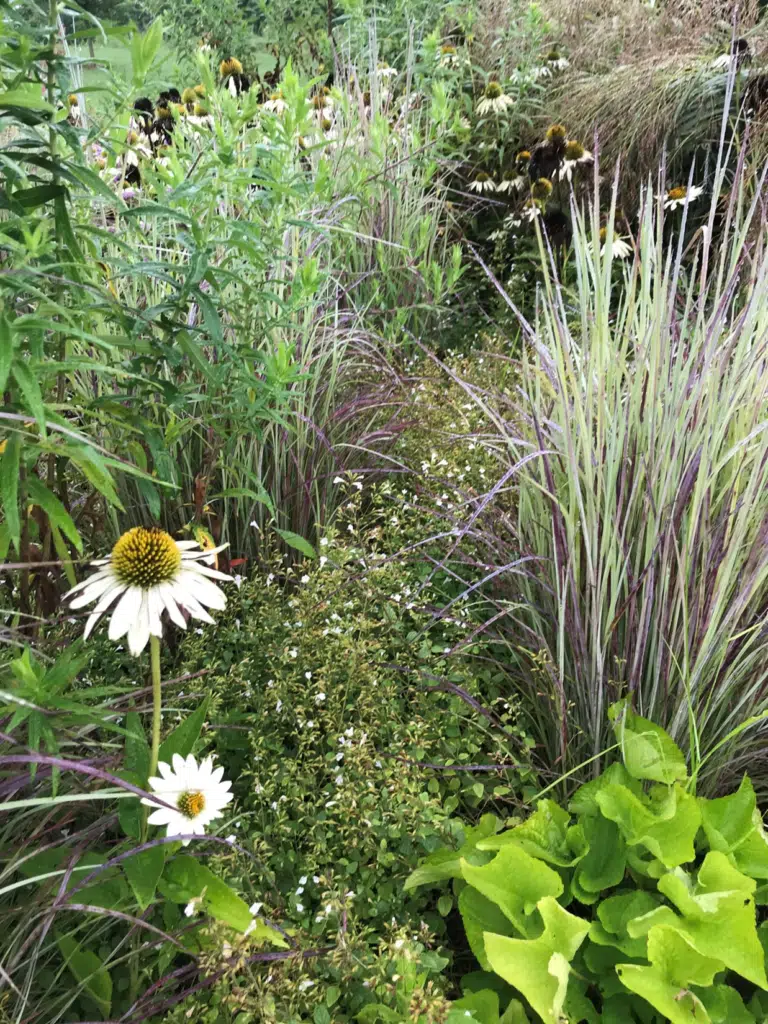
Changing our habits necessitates that we adjust our perception of beautiful and healthy landscapes. A recent survey of native bees across the city of St. Louis revealed that areas of the city with higher perceived aesthetic value had significant decreases in the diversity of bee species present (Tonietto et al. 2011, Lowenstein et al. 2014). This implies that landscape management decisions and practices used to achieve the widely accepted standard of a beautiful and cared-for garden may not be supportive of biodiversity. With care and intention human landscapes can contribute more to regional biodiversity than we may think. Urban and suburban land management must make biodiversity an objective.
Human created landscapes are complex and unique ecosystems with biological, social, economic, political, and cultural drivers. We must identify areas of conflict between human needs and biodiversity goals, and work to protect the life that sustains us. How tightly should we cling to our social constructs about aesthetics that are hampering insect populations? Gardening should consist of knowledge-based work, creating landscapes with ecosystem function as a central tenet.
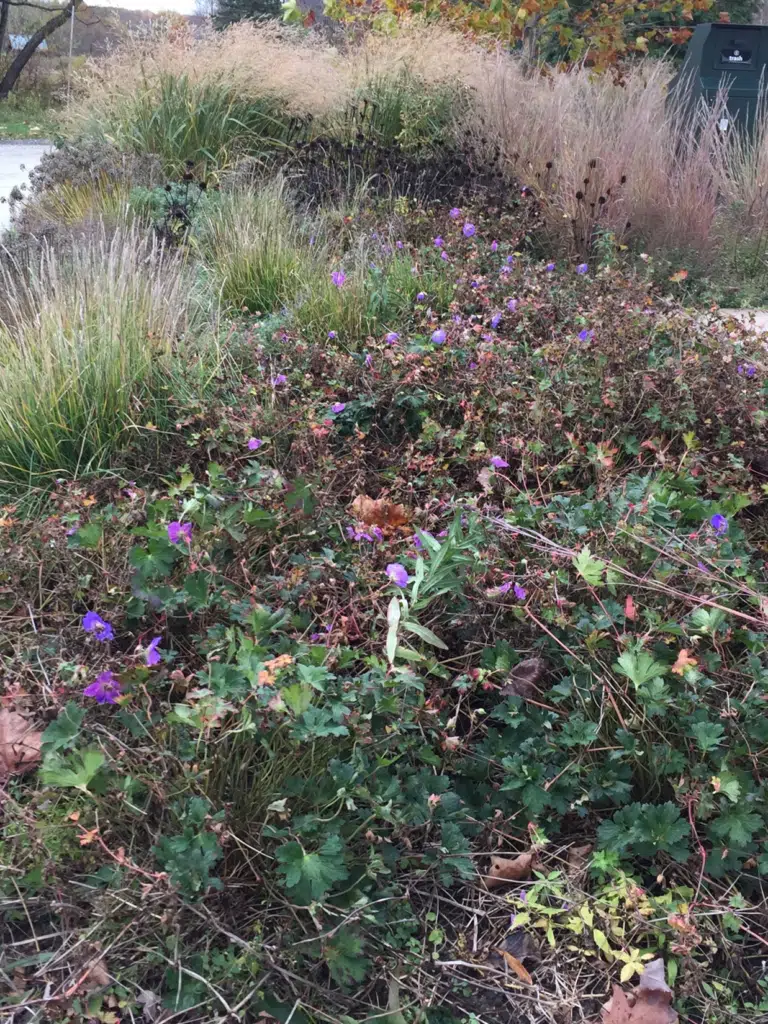
The terrace offers beauty throughout the year. Visitors can lounge under the awnings or enjoy picnics and picturesque views of Corning Lake. Though the management style is less rigid than a formal garden, it meets both the human needs of the site and provides abundant food and habitat for non-human species.
There are many other ways to support biodiversity through garden management choices. Avoid applying pesticides, provide season-long blooms with a diversity of flowering times and flower colors and shapes, grow species used by insects as nesting materials and locations, and provide protected places for insects to overwinter by waiting until early spring to cut back.
I cut back the plants on the terrace using garden shears, making multiple cuts down stems in order to end up with smaller bits of debris that look a bit tidier. You could use a weed whipper or a lawn mower equipped with mulching blades for the same purpose. If you still can’t stand not to mulch, use 1-inch of local/regional leaf compost in place of wood chip mulch; this will encourage the development of a healthy, living ecosystem. Roy Diblik suggests planting lots of bulbs to come up early through the debris, to add interest and helps resist the urge to mulch.
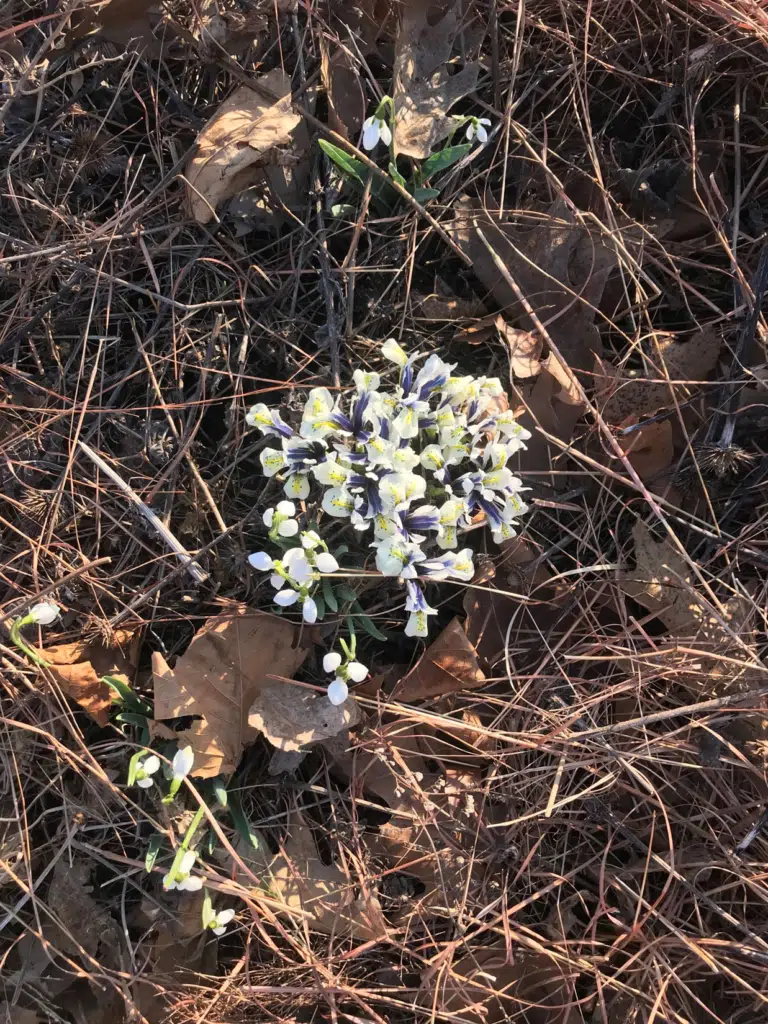
If you are interested in learning more about the topics covered in this blog, check out Roy Diblik’s “The Know Maintenance Perennial Garden,” Doug Tallamy’s homegrownnationalpark.org, and watch some of the wonderful OSU webinar series, “Tending Nature: Native Plants and Every Gardener’s Role in Fostering Biodiversity” and “Bee Lab: Pollinators in the City Speaker Series.”

Jessica Burns
Gardener
Jessica Burns is a gardener at the Holden Arboretum, where she has worked since 2018. Jessica has studied herbalism and organic farming for over ten years. She loves propagating plants from seed and hopes to have her own nursery someday. Jessica hopes to affect change in the world by promoting ecologically beneficial perennial food systems and planting trees.












